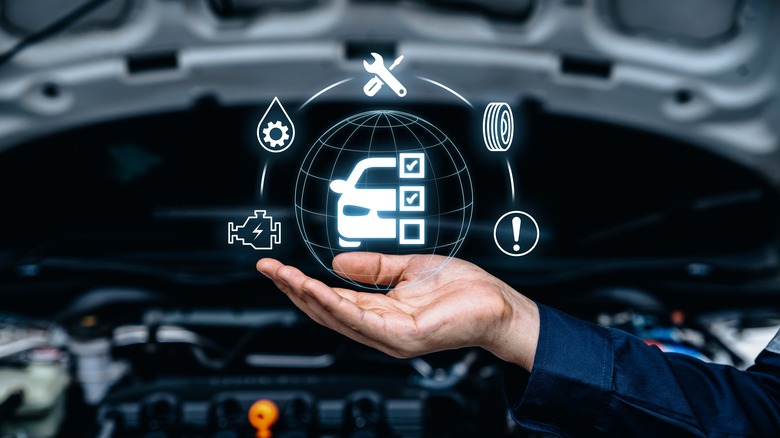Why Engines Get Vapor Locked (And How To Avoid It)
As essential as cars are in the modern world, vehicles and their engines have been regular sources of financial, and thus emotional strain for owners since the very first automobile was invented. While more than a century's worth of advancements have helped ease some of the more common issues plaguing the motorcades of the world, one oft-overlooked issue that continues to plague cars old and new is vapor lock.
We're guessing there are a lot of folks out there who don't know what engine vapor lock is. If you fall into that likely majority, we can tell you the issue is similar to a hydrolocked engine, only instead of water causing problems, vapor lock occurs when the liquid fuels therein are heated to a boil and vaporize before entering the vehicle's carburetor. That's a big problem because it means that not enough fuel is actually making it to the engine, which in turn can result in your car misfiring, struggling to start, accelerating slowly, and even stalling entirely.
As for what causes engine vapor lock, there are any number of reasons the fuel in your engine could reach such an overheated state. Those causes can include extreme atmospheric temperatures, excessive engine heat, and fuel lines being positioned too close to high heat engine components. In colder climates, vapor lock can occur if you are still using a winter fuel blend in your car when the weather is significantly warming up.
Avoiding a vapor locked engine
Many modern cars, of course, do not have carburetors, and are instead outfitted with electronic fuel injection (EFI), a change that greatly reduces the possibility of engine vapor lock. The rub there is that the advent of efficient and reliable EFI systems and electric fuel pumps soon led to changes in automobile fuel itself, and modern gasoline using Ethanol has a much lower boiling point than in the past. The risk of vapor lock can be reduced by using fuels without Ethanol, though it will remain a potential issue for most cars on the road today.
The good news is, there are certain steps you can take if you want to try and avoid the problem altogether. On the top of that list is to drive a car made after automakers phased carburetors out of the equation. If that isn't an option, you can also try to avoid driving your vehicle on days when extreme heat is a factor. Likewise, you can likely reduce the chances of a vapor locked engine by not allowing your vehicle to idle for too long on hot days.
As noted before, if you live in cold climates where it's common to use a winter fuel blend, you might be wise to switch to normal gas the moment the weather starts getting warm. You might also try utilizing nylon braided fuel hoses, and there are even special covers you can purchase to protect your fuel lines from getting too hot.
How to fix a vapor locked engine
Now that you have a little context on how to prevent engine vapor lock, the question becomes: What steps do you need to take if it happens to your car? As is the case with any problem with your automobile's engine, the first step in fixing the issue is correctly diagnosing what caused it to begin with. Because vapor lock is not a regular problem for most modern cars, it may not be the first thing mechanics think of when inspecting the engines of newer builds.
If you realize your engine is vapor locked yourself, you can help alleviate the issue on your own by safely parking the vehicle and letting the engine cool down. This should help any fuel return to a liquid state and once again power your engine successfully. Before that can happen, you'll need to expel whatever vapor might be left in the fuel system. This can be accomplished by pressing the gas pedal while simultaneously cranking the vehicle's engine. Once the engine turns over, continue pressing the accelerator until the engine is running without any jumps, starts, or jolts.
Further fixes to avoid vapor lock may need to be performed by an automotive professional. That's particularly true if your fuel lines are located too close to heat generating engine components, as they may need to be moved or redirected to prevent vapor lock from occurring in the future.


